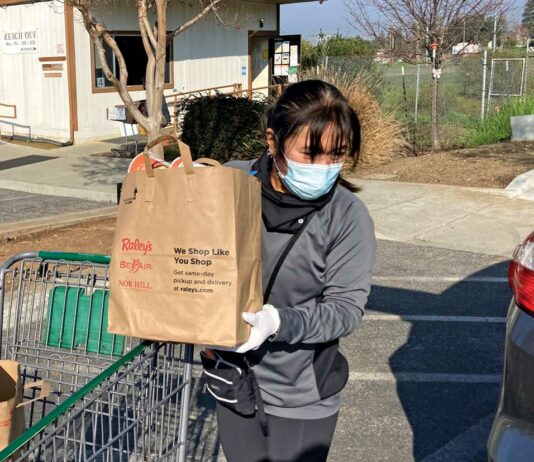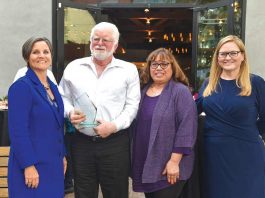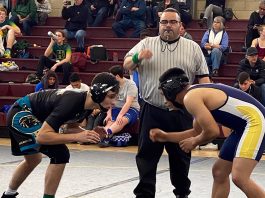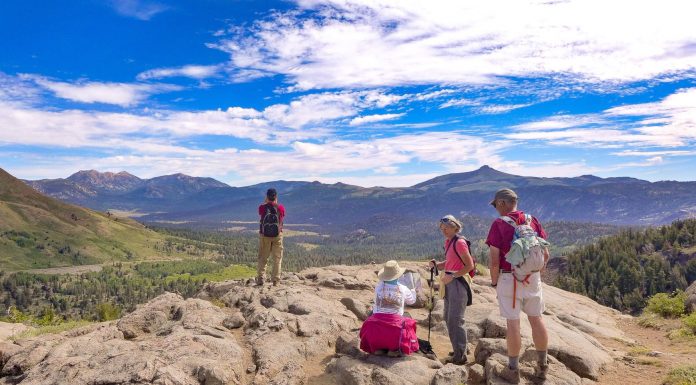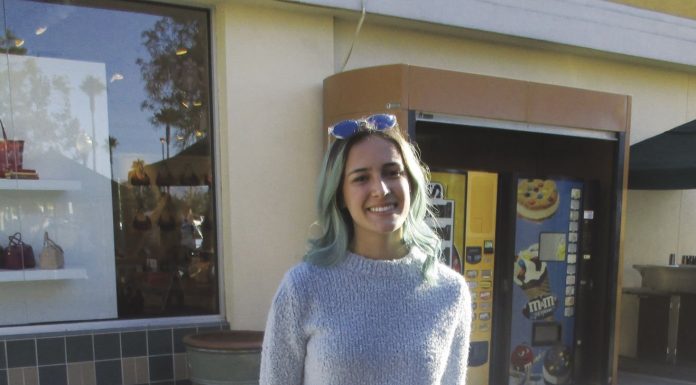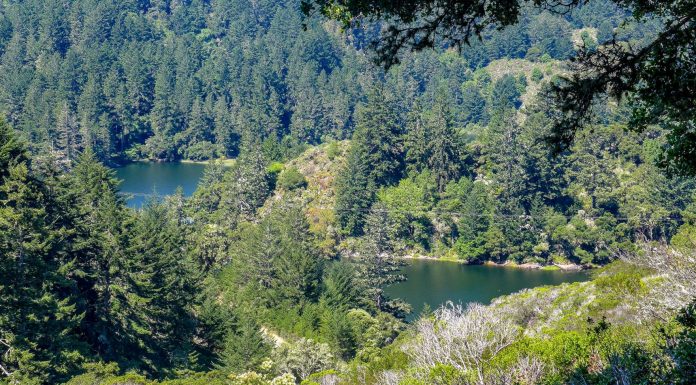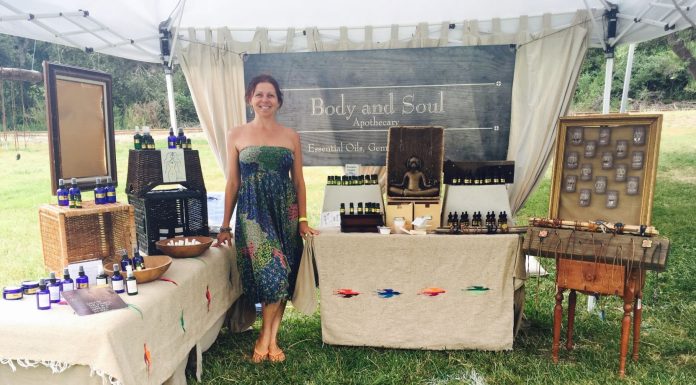Testing Limits
Beware! There are mountaineers out there, and they are all around you. They are hard to spot, because they look just like you and me. Cleverly disguised as teachers, accountants, students and such, they are hidden from view. You may not recognize them, but believe me, they are out there.On a recent Saturday morning in mid-July, 68 of your friends and neighbors stood at the foot of 10,381-foot Round Top Mountain in the Sierra, and set out on a mountaineering challenge they had prepared for over the past seven months. It began with a four-mile loop at Coyote Valley Open Space Preserve on New Year's morning. Throughout the winter and spring, we tromped five more trails, some as close as Henry Coe State Park; others farther afield like Mount Diablo State Park. At each stop, we strengthened legs, lungs, and group esprit for the summer's coming challenge. Round Top was the fourth summer challenge. Five years ago, I wrote a November column inviting readers to make a bold commitment; something exciting and a bit scary. ‘Come with me to the top of Clouds Rest in Yosemite next July; a thirteen mile round trip walk to a 9,926-foot peak that looks 1,100 feet down on Half Dome.’ The first of six "prep" hikes would be New Year's morning, an annual tradition I had invited readers to for several years. With the challenge as an incentive, the 20 or so that had come in years past exploded to well over 100. Nearly 70 people came to Clouds Rest and similar numbers have come in subsequent years as we have tackled Mt. Tallac (9,738') and Mount Hoffman (10,856'). It would be easy to dismiss these people as lycra-clad fitness fanatics. It just isn't so. Round Top challengers ranged from age eight to 76, and they came in every size and shape. The day before the challenge, we gather for a short hike to stretch our legs and acclimate to the altitude. Round Top is near Carson Pass (8,652 feet) where Highway 88 crosses the Sierra crest not too far south of Lake Tahoe. We set out from the trailhead at the very top of the pass where the Pacific Crest Trail crosses the road. After a short walk through a forest of lodgepole and western white pines, we emerged into a beautiful landscape characteristic of the high altitude terrain we would travel throughout our wanderings. Timberline at Carson Pass is much lower than it is farther south in the Sierra. At a relatively modest elevation, we had popped into wide open alpine country. In between sporadic wind-sculpted whitebark pines—the only conifers still hanging on—nothing grew above thigh high. The view was limitless in every direction, but the wide open landscape played second fiddle to the wildflower display. Lupine, several penstemon, iris, spreading phlox, mule's ears, several paintbrushes, wallflowers, delphiniums, and on and on. It was all too gaudy to be God's refined tastes—I suspect that Disney had a hand in it. We lunched beside Winnemucca Lake nestled beneath Round Top. Every inch of terrain was laid bare between the toes of our boots and the summit looming impressively overhead. Many sat quietly, just looking up. The Woods Lake trailhead was humming with greetings and lively chatter by 8:30 Saturday morning. Prior challenges had been out-and-back hikes, but our route this year would be a loop. When I did a reconnaissance of the route several weeks earlier, the first leg to Round Top Lake was covered with snow. While I never lost my way, I did lose the trail several times. I cautioned people that if the trail was hidden, follow the creek, which would lead you to Round Top Lake. Just below Round Top Lake, we popped above the trees and back into the open terrain we enjoyed yesterday. Here, we left the gently graded trail and turned up, steeply up. No more trees, but surprisingly colorful ground hugging alpine plants matted the inhospitable rocky slope. Rather than hiking, we were now trudging, each step a triumph of will. I tell people that half way up these climbs, they will want to grab a rope, organize a posse and give me some old west justice. But when they get to the top, all will be forgiven. Dead tired, chest pounding, every step up a seemingly endless mountain slope like Round Top is a test of will. But when the "up" vanishes and all the world is beneath your feet, it is hard to describe the feeling and for many—the transformation—that comes over you. The wind was brisk and the view was infinite at the top. Round Top Lake and Winnemucca Lake just below appeared as if through an airplane window. To the north, Lake Tahoe and Desolation Wilderness. To the south, the restless Sierra grew higher and higher down toward Yosemite and beyond. In better visibility, we would have seen Mount Diablo out west. The weather, the country, the flowers and the views teamed up to give us a memorable day. As ever, I thank all of you who come, but more than that, I tip my cap to you. For many of you, it is just a hard day on the trail, but for others, I know Round Top tested your limits. Yet, you took the challenge.
Think you can’t buy a house with a low down?
Our South County marketplace can be a daunting one for first time buyers, or for anyone who may not have 20 percent to put down on a home. There are many options to help you without the limiting factor of 20 percent down. Lenders have a variety of products that can help anyone who doesn't quite have that much saved for the down payment.
What they’re wearing
Gilroy may not be the New York or Paris of fashion, but that does not mean our little town lacks a sense of style. Walking around Gilroy this weekend, I ran into many people of different genders, races and ages. Despite all these differences, they had one very special trait in common—a striking sense of style.Starbucks, the hot spot for sleep deprived workers, teenage girls and… this just in..., electronic design firm owners? Melanie Byerly, 65, was on her way to Monterey, when she made a quick pit stop at the Gilroy Outlets. Like others who can remember midcentury elegance, her fashion inspiration is Jackie Kennedy. Byerly says “[Mrs. Kennedy] had a great sense of style, but of course she had a great deal of money so she could buy the best,” says Byerly. “I like the simplicity of her dress, the beautiful lines, and she used beautiful fabrics, not a lot of ornamentation.” One can match Byerly’s beautiful style by spending $500 per month on clothes and shopping at her favorite store, J Crew.Starbucks must be the fashion hub of Gilroy, because standing in line waiting to buy a cool beverage, was Acacia Alvarez, 16. Her teal hair caught my eye, and I knew I had to sit down and talk with her.Alvarez is a full-time student, but works at Tapioca Express and babysits on the side. Being a student, she limits how much she spends on clothes, spending less than $25 on most items. Some of her fashion choices are inspired by Manon Macasaet and Ceilidh Joy, two models that focus on vintage clothing, but often add their own personal, modern twist to their style. For example, Alvarez says, they’ll wear a vintage top and then rock it with a tight black leather skirt. These two extremes make a very bold fashion statement—one Alvarez strives for.
Hiking Peninsula Watershed
We are very fortunate that the hills west of Interstate 280 along the San Francisco Peninsula remain largely wild and undeveloped. Many acres of that land are open every day to the public at no charge or for a small day use fee, but not all.
High on the hog
In a world of fad diets and low-fat foods, the major pork producers in America have, over the last 60 years or so, reengineered the tasty hog.
Fruit-forward pinot noir
One unusual Friday night, with no plans on our calendar, my husband and I went to Sarah’s Vineyard for their Sunset Music Series. For $60 we enjoyed some of the finest pinot noir on the Central Coast, dinner and live music amidst an amazingly beautiful, 360-degree vista.
Planning for a life of fitness
Most of us grew up playing sports or doing something that required movement. A number of today’s high school athletes train either in the morning, the afternoon, or both. For college athletes, the intensity and length of their training is even more demanding. Athletes typically train for three or more hours a day.
From farm to fair
From Beyonce and Jimmy Carter to Jacqueline Kennedy Onassis and Willie Nelson, 4-H and Future Farmers of America (FFA) have been helping young people across the nation build leadership skills for the last century.For two Gilroy families, the Beyers and the Funkes, these organizations have not only taught about animal husbandry and showmanship at county fairs, like this week’s Santa Clara County Fair, but they’ve helped foster community and cultivate a personal sense of accomplishment for the kids involved.The older of the two organizations, 4-H had its official start in 1902. It began as an extracurricular youth organization for young people ages 5-21 as a way to teach leadership, encourage citizenship and responsibility, and develop life skills. The group was later formalized with the 1914 passage of the Smith-Lever Act, which created the Cooperative Extension Service, a partnership between the USDA and land-grant universities to extend the agricultural research efforts of these universities.Similarly, the FFA began around the same time as part of the Smith-Hughes Act (1917), which expanded upon the Smith-Lever act to allow for vocational agricultural training. Eventually, the development of a high school curriculum gave way to the FFA in 1928 when 33 students from 18 states officially formed the organization.Cheryl Beyer, 48, enrollment chair and a leader for the Adams 4-H chapter in Gilroy, one of four chapters in South Santa Clara County, started in 4-H more than 10 years ago when her oldest child, Jasmine, was six. As a homeschooled family, Cheryl wanted to provide additional social outlets for her four children and she sought out 4-H as an extracurricular opportunity.“Everyone thinks that your kids are going to turn out weird when you homeschool them because they think that they are sheltered,” says Cheryl, but she says her kids, like their peers, are active in their church group and in sports and dance programs.“When they got involved in 4-H the first two projects that they took on were garden and rabbits. So for years we raised rabbits and then we added chicken and then we added swine.”Farm to tableWith the popularization of the farm to table movement, families like the Beyers and the Funkes are walking the talk. While not large scale farmers, they are raising and processing their own animals. Processing is the term used for slaughter, and Cheryl Beyer admits it’s a euphemism used by the meat packing industry.“I think it’s a shame that we use the word ‘process’ because it divorces people from what actually happens with their food,” she says, adding that because of 4-H, her kids are very cognizant of waste.“When we cook a chicken that they have raised, if there is anything left over, they will say ‘let’s wrap the leftovers up.’ They know what it took to get that chicken from the little chick all the way to the table because they had to do it.“When they saw Food, Inc. they said, ‘We want to raise meat chickens because we don't want to eat the chickens that come from the store.’ So first we raised turkeys and then we raised meat chickens.”For people like the Funkes, who raise larger animals, there is a company that comes and slaughters them.Kathy Funke, 51, who is an agriculture instructor at the Charter School of Morgan Hill, has roots in both FFA and 4-H, where she was a participant and leader for many years and where she met her husband, Dave.“I taught high school agriculture over in Soquel, then when I had kids I stayed home with them and then I went back to teaching at the charter school—K-8,” says Kathy. “We have a farm at the school with goats and chickens and pigs.”The Funkes own property in Gilroy, where they raise goats, meat birds, hens, swine, horses and, until this week’s county fair in San Jose, a steer.Kathy’s daughter, Beth Funke, 18, says the farm to table movement is “good for us.”“When we first moved here, our dream was to grow everything we eat,” says Kathy. Because only one animal can be sold at auction, as a market project, Kathy says her kids were raising multiple animals and selling them outside of auction. They would hold their own farm to table events after the fair, inviting the people who had purchased animals from them, and serve food they had grown on their farm.Beth’s Supervised Agricultural Experience project this year is a steer, where she’ll take the skills she learned in her agricultural class through FFA and apply them outside of class in at fair.“I’ve never shown a steer before,” says Beth, “so this is all very new to me. I’ve been working really hard with him and I want to sell him at the fair. My end goal is to get a good price, so $3.50 a pound.”According to her mom, “Most of her animal projects have been market projects because we’re big into entrepreneurship here. She’s made a lot of money here.”More than animalsBut not all projects go to market. This year, in addition to showing meat hens, Joshua Beyer, 16, is showing a blown glass bowl at the fair in the “still” barn.“That’s basically anything that’s not alive and moving,” says Jasmine Beyer, 17. “One of the coolest things about the fair is that everyone thinks that it’s animal-focused, but it’s not. You just have to go into the still barn.”Stills could be anything, including baked goods, art, flower arranging, or photography. Jessica Beyer, 14, has previously won a blue ribbon for baking. “That was really fun!” she says. “It felt really nice to accomplish something.”Emerging LeadersCheryl Beyer shares that even though a lot of the projects are agricultural, they teach young people more than animal husbandry. “It’s to teach them responsibility. It’s to teach them leadership skills.” In addition to meeting for individual project groups, 4-H clubs have a general monthly meeting, where the club gets together and discusses different projects.“They will get up and talk about what they learned in their projects, so that’s teaching them public speaking skills,” says Cheryl.“I still have trouble with public speaking,” says Jessica Beyer. “And because we have presentations in 4-H, I feel like it’s really helped me a lot in overcoming that fear.”Other practices that encourage leadership are preparation for 4-H camp, where Jasmine Beyer worked as a youth leader this summer. Over a six-month period, she planned this year’s week-long summer camp with two other students and three adult advisors.“So the project is just kind of ‘a spy in disguise’ if you will. It's the vehicle for teaching responsibility, public speaking, money management—because that feed starts getting expensive after a while—just all of these different life skills that they can take beyond 4-H,” she says.
Powerful healing methods
You can find the Body and Soul Apothecary booth by its gentle scent alone. Follow that enigmatic smell and you’ll quickly stumble upon one of the more eclectic companies present at Morgan Hill’s farmers market.
Guest column: Praise for Gilroy police
In light of all that is going on across the country regarding law enforcement, this might be a good time to pause and recognize the brave men and women of the Gilroy Police Department.


